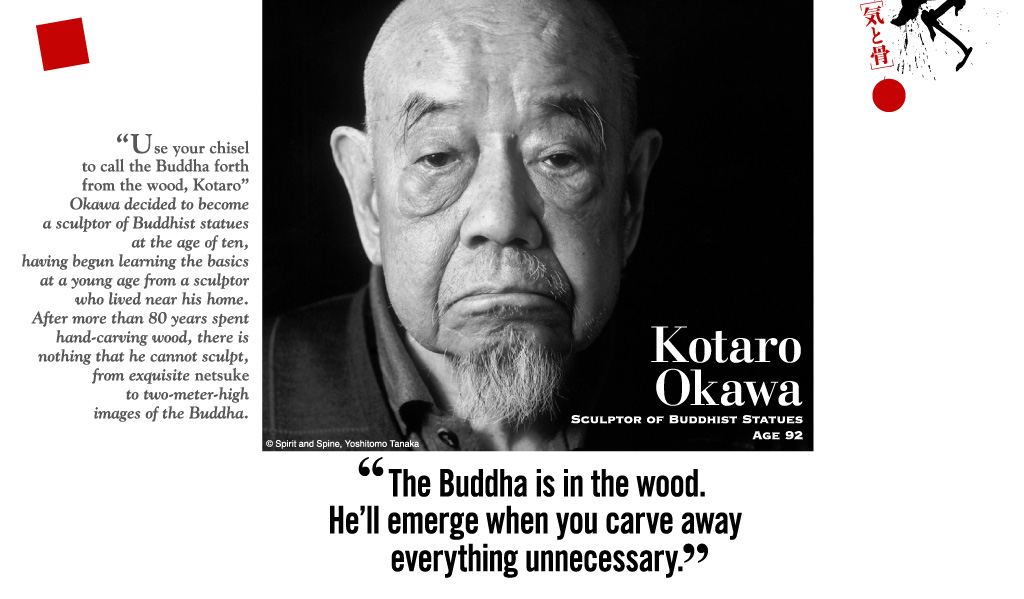Okawa was born into a family who had lived in Asakusa-Abekawa-cho for nine generations. The boy who dreamed of becoming a professional rakugo comic storyteller was already carving images of the Buddha good enough to sell when he was just an elementary school student. Having completed his apprenticeship, he began his independent career at the age of 19.
But then he was conscripted. Even now, the work that he laments most of all is the statue of Kannon, the Goddess of Mercy, that he carved for his devout father. He made it just before becoming an infantry soldier with the Imperial Guards, preparing himself for an imminent death in battle, but it was burned to ashes with his house in the indiscriminate bombing of Tokyo in the early hours of March 10, 1945, a raid said to have claimed 100,000 lives. The next morning, he rushed from the Military Police Academy at Nakano to the place where his home had stood, only to be met by scenes of appalling devastation.
Because he had been in the military police, he was barred from public office, but he was content to return to plowing his own furrow as a sculptor of Buddhist statues. As well as applying himself to the task of restoring Buddhist statues damaged and destroyed by fire in the air raids, he also made a name for himself with his leather work and was rewarded with the Medal with Yellow Ribbon.
His talents extend even further, as he is also an accomplished senryu poet. His sense of pride and responsibility as someone whose family has lived in the birthplace of senryu for generations has stoked his passion for promoting traditional artisan culture. For many years, he chose the poems to be published in the senryu column of a trade paper. He was also instrumental in establishing a monument to honor Karai Senryu, the local man who originated the genre, as well as providing the wooden pattern for the relief that adorns the monument’s stone stele.
This venerable sculptor of Buddhist statues puts his heart and soul into the wood. He says, “I want to keep carving images of Kannon that make people clasp their hands in prayer the moment they see them.”







































































































